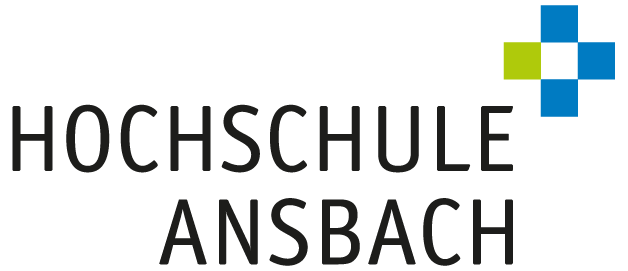TAKE - Transferzentrum Ansbach - Klimaschutz & Effizienz
Das TAKE Transferzentrum hat das Ziel, kleine und mittelständische Unternehmen (KMU) aus der Region bei der Neuentwicklung von innovativen Produkten bis zur Markteinführung und der energetischen Optimierung von Produktionsprozessen in einem breiten Anwendungsbereich zu unterstützen.
Auf dieser Basis soll die Wettbewerbsfähigkeit für die klein- und mittelständischen Unternehmen der Region deutlich gesteigert und Wachstum und Beschäftigung in der Region gesichert und ausgebaut werden. Dabei werden die Unternehmen ertüchtigt, den aktuellen Herausforderungen Digitalisierung, Ressourceneffizienz und CO2-Neutralität erfolgreich gerecht zu werden.
In drei Innovation Labs sollen gemeinsam mit industriellen Kooperationspartnern beispielhaft konkrete Lösungen erarbeitet werden:
- Innovation Lab Digitales Energiemanagement: Durch das Labor für Digitales Energiemanagement können Themen für eine energieeffiziente und nachhaltige Produktion in die Unternehmen transferiert werden, um diesen einen Wettbewerbsvorteil zu verschaffen. Es demonstriert und schult digitale und drahtlose Lösungen für Energiemanagementleistungen in einem anwendungsorientierten Umfeld.
- Innovation Lab Ressourceneffiziente Materialentwicklung: Das Labor für ressourceneffiziente Materialentwicklung fokussiert einerseits die Materialoberfläche und andererseits die Entwicklung neuer nachhaltiger Materialien im Kunststoff- und Additive-Bereich. Die Laborausstattung umfasst verschiedene Geräte zur Oberflächenmodifikation mittels Niederdruck- und Atmosphärendruckplasma.
- Innovation Lab Simulationsbasierte Energieeffizienz: Mit der Zurverfügungstellung der erforderlichen Hard- und Softwareausstattung (HPC-Cluster, Simulationssoftware) werden regionale Firmen über Ansatzpunkte und Einsatzmöglichkeiten der simulationsbasierten Optimierung von Apparaturen und Prozessen beraten und gefördert.
Die an den Innovation Labs erarbeiteten Lösungen werden in einem Wissenspool gesammelt und bilden so eine Basis, um weitere Unternehmen bei vergleichbaren Fragestellungen zu unterstützen. Dadurch erfolgt ein Ausbau der Forschungs- und Innovationskompetenz in der Region. Mit seinem Fokus auf Energie- und Materialeffizienz bildet das TAKE Transferzentrum somit einen wichtigen Baustein für die Stärkung der Innovationskraft der strukturschwachen Region Westmittelfranken.
Wagner, Jan (2025)
Vortrag auf der 20th European Meeting on Fire Retardant Polymeric Materials (FRPM2025), Madrid Spanien , https://frpm2025.org/.
This is the way: An evidence based route to phytic-acid–based flame retardant poly (lactide acid)
Open Access
Peer Reviewed
Wagner, Jan; Dudziak, Mateusz; Falkenhagen, Jana; Rockel, Daniel; Reimann, Hans-Achim; Schartel, Bernhard (2025)
Wagner, Jan; Dudziak, Mateusz; Falkenhagen, Jana; Rockel, Daniel; Reimann, Hans-Achim...
Polymer Degradation and Stability 234, 111242.
A systematic sequence of materials was investigated to develop phytic-acid (Phyt)–based flame retarded poly(lactide acid) (PLA), while factoring in molecular weight (MW), crystallinity and mechanical properties. Synergistic approaches were developed based on combinations with lignin and expandable graphite (EG), as well as by applying different Phyt salts of melamine (Mel), piperazine (Pip), and arginine (Arg). Compounds were twin screw extruded, injection molded, hot pressed and investigated with thermal analysis, size exclusion chromatography, infrared spectroscopy, tensile testing, limited oxygen index (LOI), UL 94, cone calorimeter, and scanning electron microscope. 16.7 wt.% flame retardant (FR) slightly enhances crystallization while MW remains unchanged in PLA Phyt Arg and PLA Phyt Mel. LOI was improved to 43.7 vol.% for PLA Phyt Arg, UL 94 V0 achieved for PLA Phyt Pip. Cone calorimeter results show total heat evolved reduced by 14 %, maximum average rate of heat emission 43 % lower, and peak heat release rate reduced by 50 % for PLA Phyt Mel. Phyt Mel combined with EG increased the char yield of PLA to 20 wt.% and 15.5 wt.% at 600 and 900 °C, respectively. Phyt is exploited to enhance char yield, stabilize the intumescent char, and lower the apparent effective heat of combustion. The combination of Phyt Mel and EG was proposed as an efficient FR for PLA via an evidence based developing route.This is the way: An evidence based route to phytic-acid–based flame retardant poly (lactide acid)
DOI: 10.1016/j.polymdegradstab.2025.111242
Open Access
Peer Reviewed
Promotionen
Flame retarding, processing, and analysis of green composites with natural fillers and modification of fibers in polylactide acid.
| Doktorand / Doktorandin | Jan Wagner |
|---|---|
| Forschungsschwerpunkt | Smart & Green Engineering |
| Zeitraum | 01.05.2023 - 30.04.2026 |
| Wissenschaftlich betreuende Person HS Ansbach | Prof. Dr. Hans-Achim Reimann |
| Einrichtung | Hochschule Ansbach - Fakultät Technik |
| Wissenschaftlich betreuende Personen (extern) |
Technische Universität Berlin
| Prof. Dr. Dietmar Auhl
BAM-Bundesanstalt für Materialforschung u. -prüfung | Prof. Dr. rer. nat. habil. Bernhard Schartel |
Projektleitung
Teilprojektleitung
T +49 981 4877–309 alexander.buchele[at]hs-ansbach.de
ORCID iD: 0009-0000-1030-0689
Projektbearbeitung
T +49 981 4877-361 j.ninow[at]hs-ansbach.de
T +49 911 53029-9190 j.stromberger[at]hs-ansbach.de
T +49 981 4877 344 j.wagner[at]hs-ansbach.de
T +49 981 4877-346 marcel.raeuber[at]hs-ansbach.de
Projektdauer
09.12.2022 - 31.12.2027Projektpartner
Projektförderung

Förderprogramm
EFRE - Europäischer Fonds für regionale Entwicklung im Ziel "Investition in Beschäftigung und Wachstum" Bayern 2021-2027
